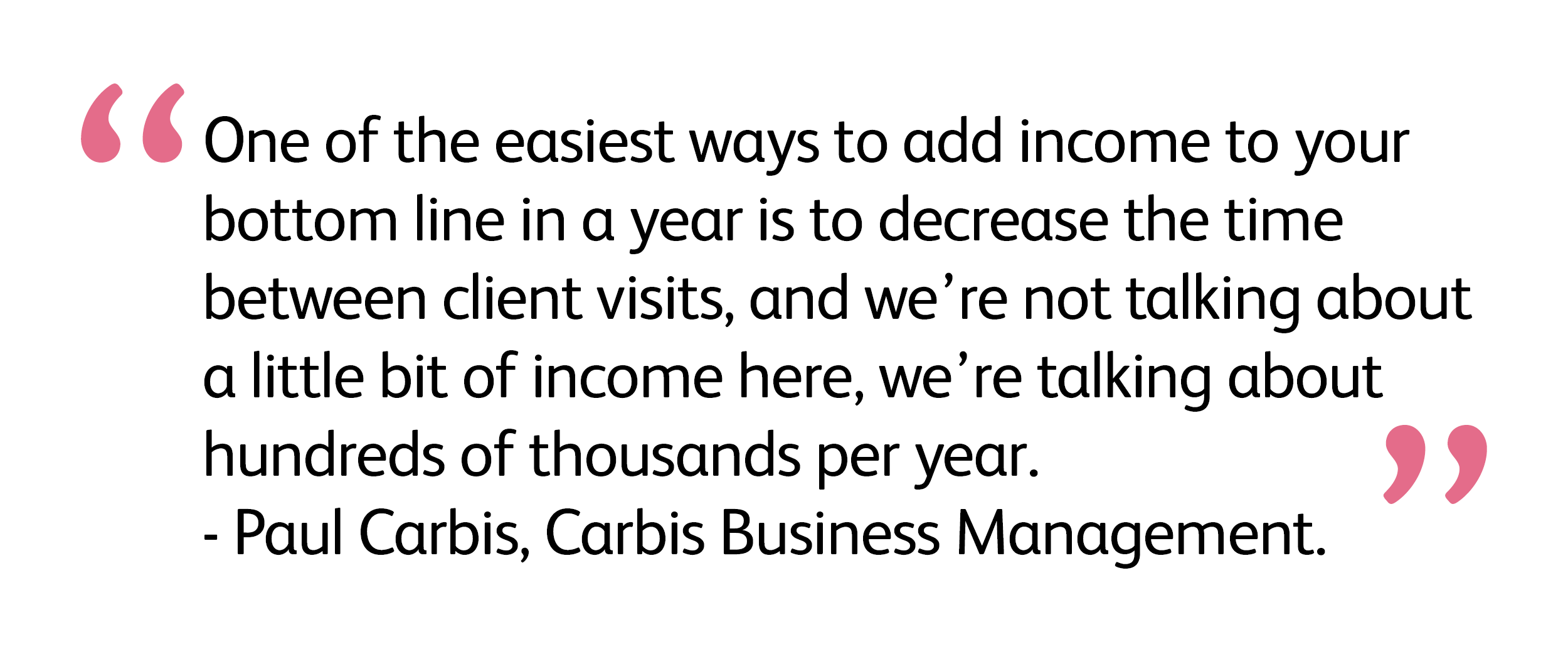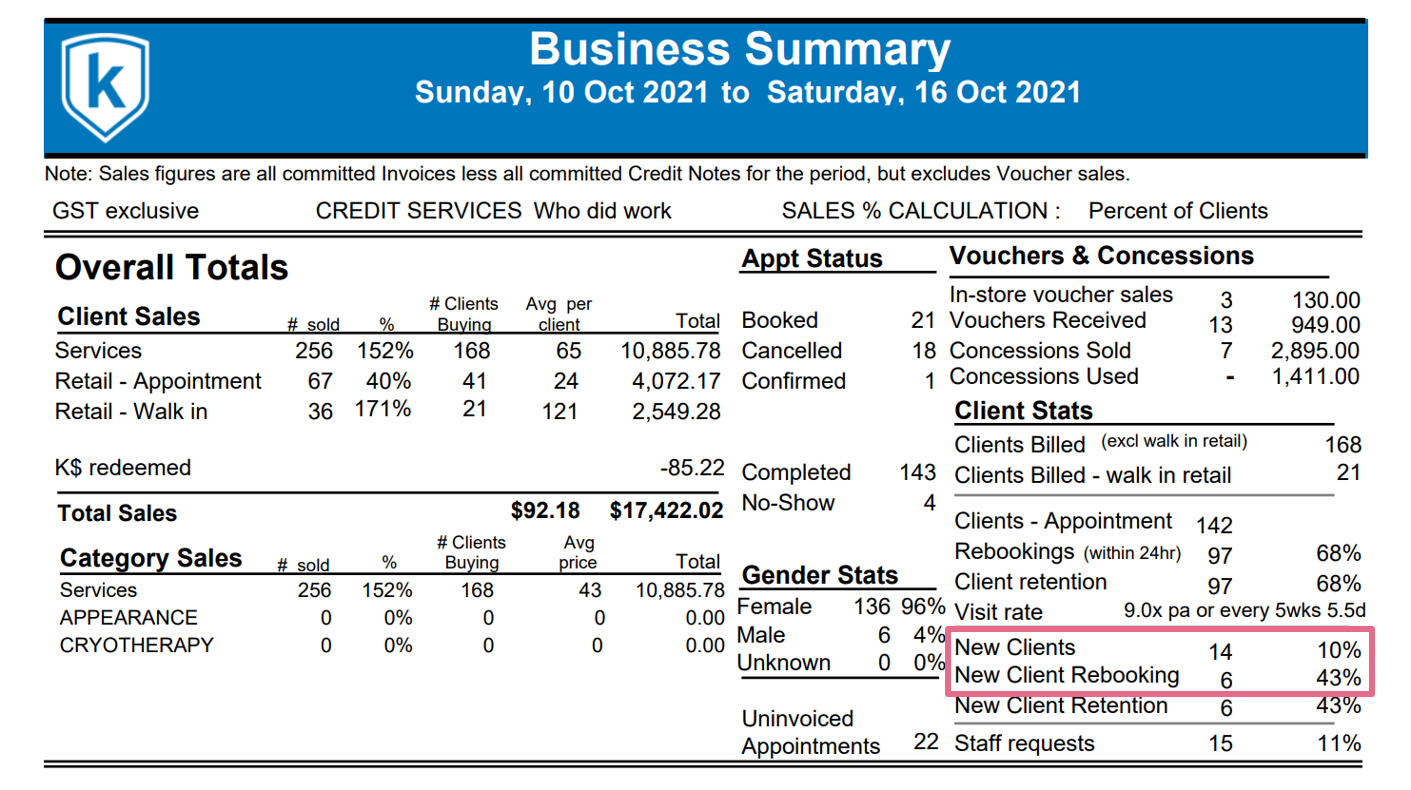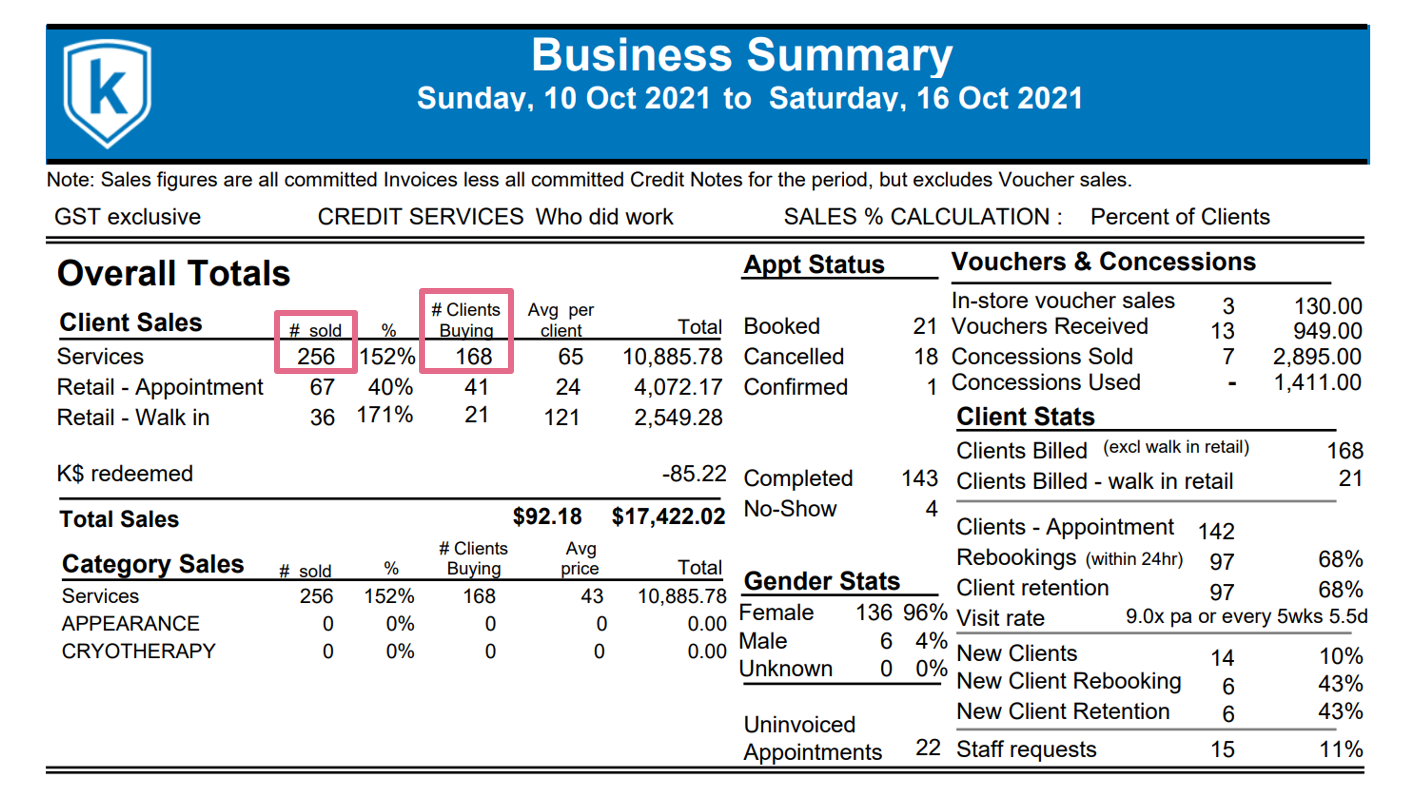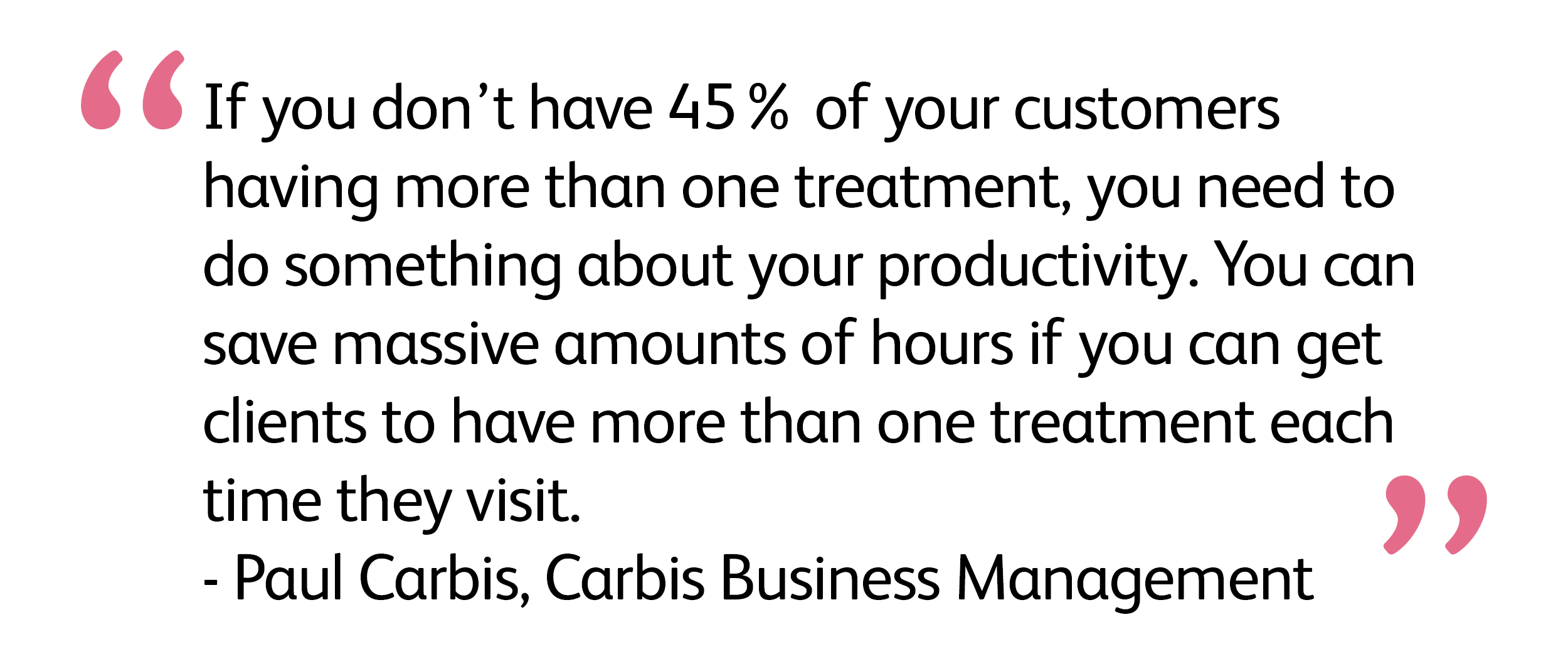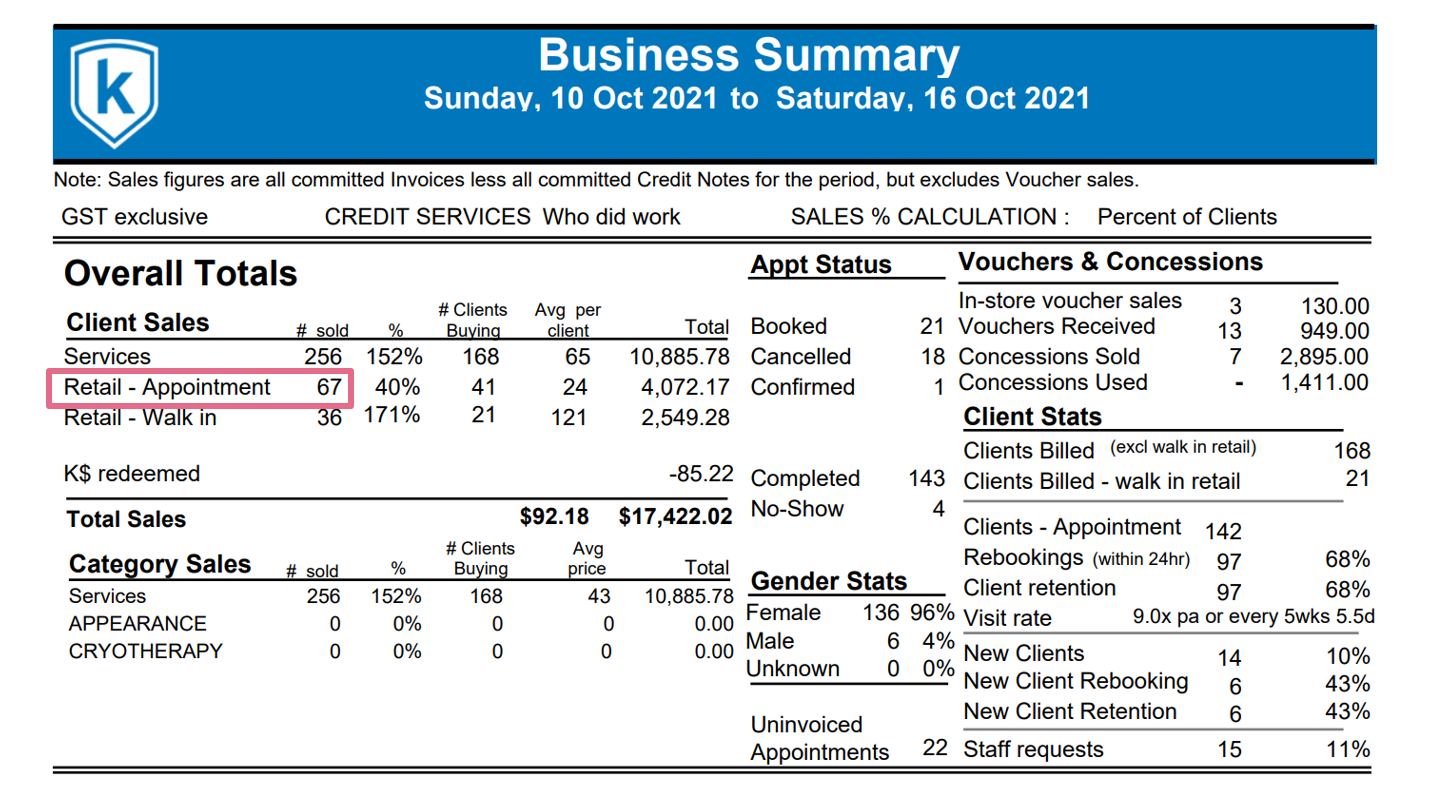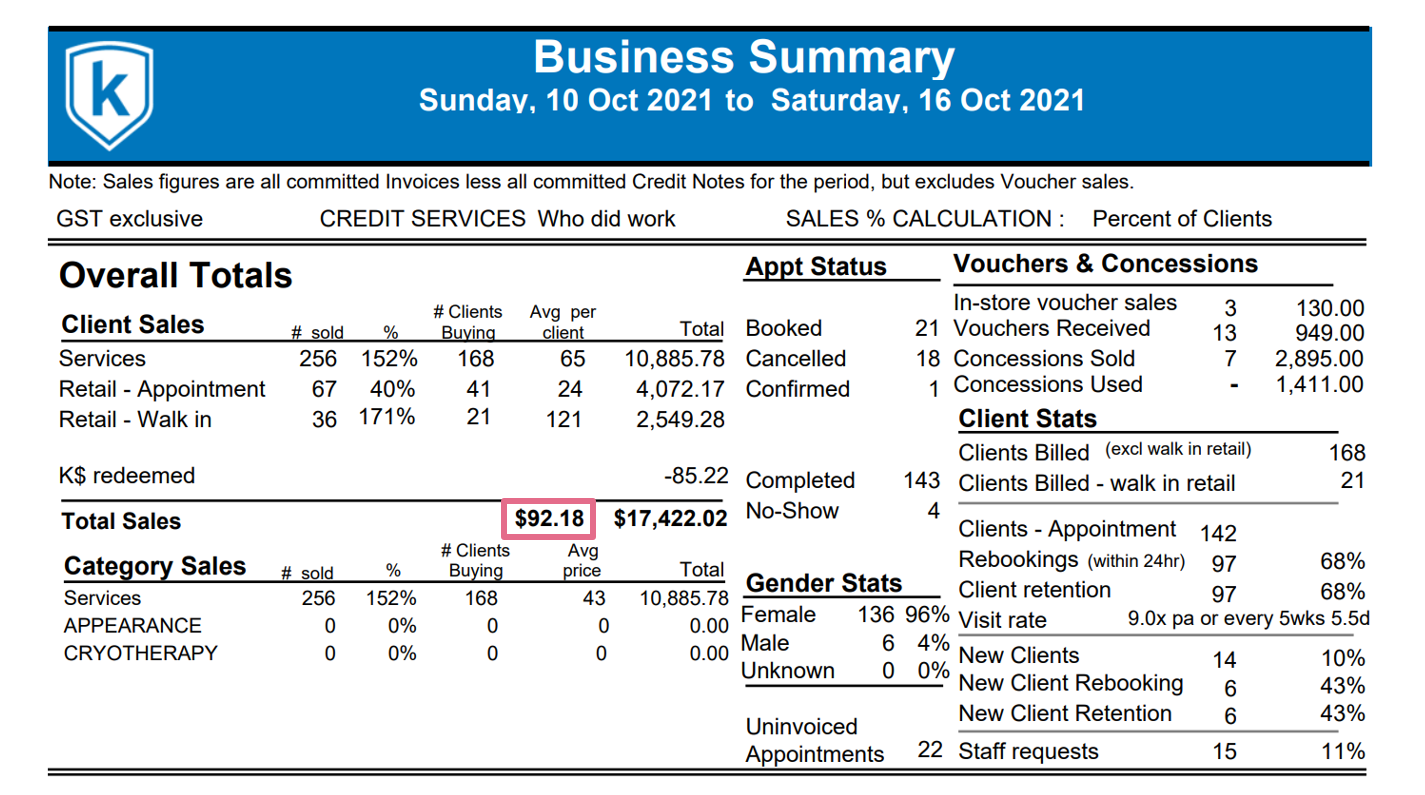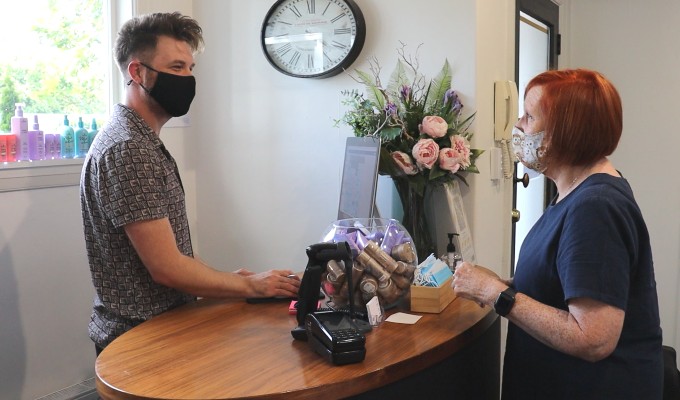Want to learn how to add hundreds of thousands of dollars to your salon, spa or clinic’s annual revenue and improve your productivity? Paul Carbis from Carbis Business Management shares the five numbers from Kitomba’s Business Summary report you should be looking at and where to find them.
The Business Summary report is Kitomba Salon and Spa Software’s most popular report because it gives hair and beauty businesses full transparency over what’s happening in their business.
Paul, who has over 20 years of experience in the beauty industry and helps salons and spas to increase their productivity and profits, said the Business Summary is the most important report for salon owners, but often the figures that can add the most value are overlooked.
“Everyone who looks at the Business Summary tends to look at the same kinds of things. They will look at their total dollars, customer numbers, maybe their treatment numbers, and they might look at retail sales. Every salon owner will do that, but there’s a lot of information that most salon owners don’t look at, and I think they will blow them away once they get a handle on them,” Paul explained.
Watch the video with Paul below or keep reading to discover five figures from the Kitomba Business Summary report that can add hundreds of thousands of dollars to your revenue and increase your productivity.
1. Client visit rate
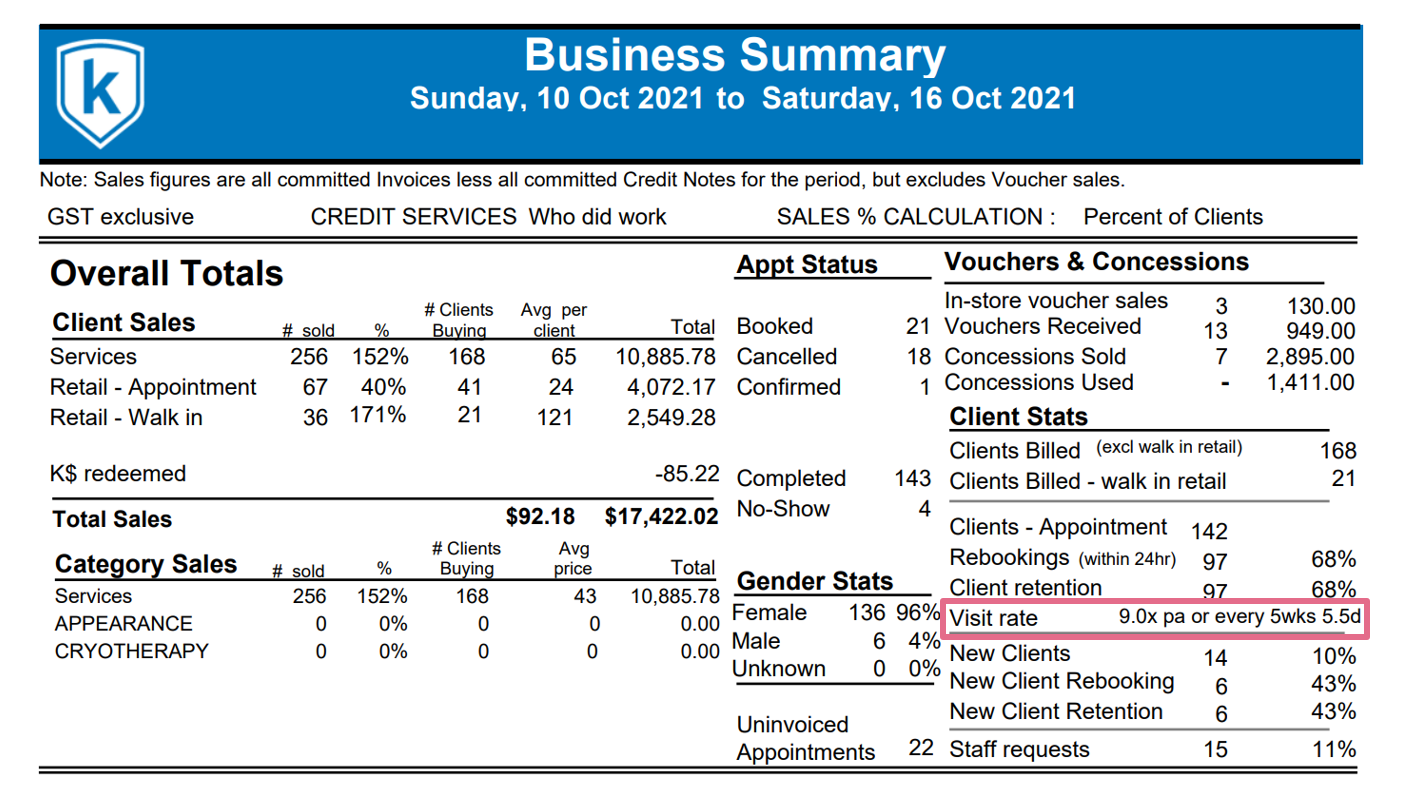 The client visit rate calculates the average time between your clients visits. The visit rate in the example report above shows that people visit this salon an average of nine times per year, or every five weeks and five days.
The client visit rate calculates the average time between your clients visits. The visit rate in the example report above shows that people visit this salon an average of nine times per year, or every five weeks and five days.
“This is the high end of what I’d like to see for a salon, but it’s on a case-by-case basis. For example, a beauty salon that does a lot of needling and IPL treatments will have a slightly higher average time between visits due to recovery time, while a beauty salon that does a lot of waxing should be around four weeks on average,” Paul said.
“If this salon had clients coming back every four weeks, they would be visiting 13 times per year. Now look at the average spend per customer on the same report, which is $92.18 [total sales]. If they were seeing a customer 13 times a year at an average spend of $92, and let’s say they had 500 regular customers: 13 visits x $92 per visit, x 500 customers = $598,000, which means they’d be making close to an additional $185,000 per year.
However, if the salon’s visit rate fell from where it is currently (five weeks and five days) to six weeks per visit, their clients would only visit eight times per year on average. That would cause their revenue to fall by around $100,000 per year, Paul explained.
“When you start putting strategies into place to get clients to rebook more regularly, all of a sudden you get more visits per year, which means more dollars in the till. One of the easiest ways to add income to your bottom line in a year is to decrease the time between client visits, and we’re not talking about a little bit of income here, we’re talking about hundreds of thousands per year.”
2. New client rebooking rate
The new clients section tells you how many new clients have had their first appointment at your salon during the selected period, while the new client rebooking rate tells you how many of your new clients have rebooked another appointment within 24 hours of their first appointment with you.
The new client retention figure tells you how many new clients have another appointment scheduled within 90 days. Since they didn’t make their second appointment within 24 hours of their first appointment, they are considered retained, not rebooked. Learn more about the difference between rebooking and retention here.
Paul recommends looking at your new clients on your Business Summary report each week to see whether it’s steady, increasing or decreasing, and whether it changes after a particular marketing campaign. Then he recommends looking at your new client rebooking rate to ensure you’re securing a second appointment with your new clients.
“There are so many salons spending an enormous amount of money trying to get new clients in the door because that’s how you grow your business. But most salon’s customer numbers don’t move that much because there’s a hole in the bottom of the bucket where those customers aren’t coming back. We want to see increases in the new client numbers, but also in the new client rebooking rate, and too often it’s not.”
Paul recommends aiming for a new client rebooking rate of 30%-50%. To do this, he suggests encouraging clients to rebook their next appointment before they leave the salon by creating a first-time customer reward programme.
“Offer them a discount for their next service and set up an Everyday Marketing campaign in Kitomba that emails or texts them automatically within 24 hours of their appointment with the offer. Create a one-month expiry on the voucher and set up another automated email in Kitomba to remind them to use it a week before it expires.”
Learn how to set up an Everyday Marketing campaign in Kitomba here.
3. Number of clients buying vs number of services sold
Underneath your overall totals for client sales is the number of services sold and number of clients buying. This tells you how many of your clients are getting more than one service during their appointments, which indicates the productivity of your salon.
“If you don’t have 45% of your customers having more than one treatment, you need to do something about your productivity. You can save massive amounts of hours if you can get clients to have more than one treatment each time they visit,” Paul said.
Cross selling services is a great way to increase your productivity and save time and resources. To help with this, Paul recommends pulling client marketing lists in Kitomba for specific services. Then sending them a targeted offer they can’t refuse for a service that would be complementary.
“For example, you could send your massage clients an offer for a spa manicure and pedicure. You could send your facial clients an offer for a massage. This will encourage your current client base to book more services when they have their usual appointment, making your productivity go through the roof.”
You can pull client lists for any service or service category using Kitomba Reports. Simply visit the Reports tab in Kitomba and run the report for ‘clients who have purchased products/services’. Select a date range and enter the name of the service or select the category you’d like to pull a customer list for.
Then you can save the list to use in campaign marketing to send out a personalised offer to your list. If you want to add images, you can create a template in Kmail. Alternatively, you can download the client list and upload it to Mailchimp, but some formatting of the list will be required.
Learn how to create a one-off marketing campaign in Kitomba.
4. Retail sales from appointments
Under client sales in the Business Summary report is the Retail Appointment section. This tells you the number of retail sales from appointments, including the total number of retail products sold, the number of clients buying, and the average spend per client.
“Underneath the retail by appointment data is the retail sold by walk in. These are the sales you have no control over, so relying on them is dangerous. That’s why focusing on retail sold by appointment is an important figure to monitor and improve,” Paul explained.
“For me, the retail hit rate needs to be at least one in three customers, so if your retail sales by appointment isn’t at least 30% of your overall client appointments, make retail sales a priority in your salon. Look at the person in front of you, what their appointment is, what they need, and sell the appropriate amount to them.”
Kitomba has two features to make selling retail easier for your team. If your client has previously purchased retail from you, when you click the Recent retail purchases button at checkout to see the client’s previous purchases and how long ago they last purchased them.
If your client has never bought retail items from you the ‘Upsell retail’ button will be displayed, which will show the top five selling retail products for your business. Learn more about upselling retail with Kitomba.
5. Average spend per customer
The average spend of your customer can be found under your total sales at the bottom of the average per client column, which tells you how well you’re maximising the spending power of clients that visit your salon, spa or clinic.
To find out which average client spend to aim for, you can use Kitomba Benchmark or read our industry insights on the average client spend for the hair and beauty industry.
Paul said the higher the productivity (which is the number of clients buying vs number of services sold), the higher average spend you will have.
“Also the more high-end services you sell will affect your average client spend. Look at what percentage of your salon’s treatments are high end services. If it’s not 30% or higher, that’s when you should start pushing those services through marketing.”
And of course, sell more retail. Use the stock value report in Kitomba to find out what your most profitable retail products are, and aim to sell more of those products to increase your average client spend.
Increase your revenue with these 5 figures
By monitoring these five figures from Kitomba’s Business Summary report and taking action to improve them, you will have the potential to vastly improve your productivity and increase your revenue.
“The top salon owners record these figures week by week to keep track of whether their figures are growing in accordance with their planning. By tracking these figures, you get to see trends in your business which can help you with future planning,” Paul said.
“It’s about doing lots of little things a little bit better. All these little tweaks will put hundreds of thousands of dollars on your bottom line quite easily.”
Read next:



